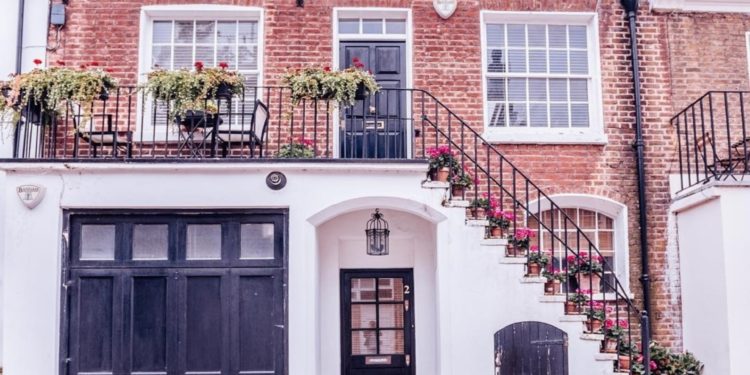When we refer to economic inflation, this is essentially the rate at which the price of goods and services increase over time. When inflation rises at a higher rate than wages, this means the cost of living shoots up and we see a big squeeze on our wallets.
It can’t have escaped the notice of many people that the UK is currently facing record levels of inflation – the highest rise in 30 years in fact. We have also seen a bumper 18 months for house price growth. But how are the two linked and does house price growth contribute to inflation and vice versa?
How is inflation calculated?
When it comes to calculating the rates of inflation in the UK, the Office for National Statistics (ONS) measures this in three ways.
- The Consumer Price Index (CPI) – Whereby the ONS compares the prices of thousands of household goods and services year on year such as milk, bread and petrol and releases its measure of inflation each month, showing how much these prices have risen since the previous year. These items and services are also continually updated to reflect what we are actually spending our money on, with the addition of smart speakers in 2019 and, unsurprisingly in 2021, hand sanitiser.
- The Consumer Prices Index with Housing (CPIH) – the most comprehensive measure of inflation which is identical to the CPI but with the addition of owner occupiers’ housing costs (including house prices) and Council Tax.
- The Retail Price Index (RPI) – Introduced in 1947, the RPI measures the change in the cost of a representative sample of retail goods and services. Whilst still in use by the Treasury for calculating index-linked tax rises, RPI has since been superseded by the CPI and CPIH and is no longer considered an official “national statistic” by ONS. However, RPI is still calculated as part of the ONS inflation index to allow for consistent historical comparison.
Why is inflation at a record high right now?
The recent high levels of inflation are mainly as a result of soaring gas and electricity costs worldwide – with UK residents expected to see an average increase of £693 in household bills this year – increased shipping costs and a shortage of specific goods. Fears of disruption to global supply chains in the wake of the recent Russian invasion of Ukraine have also pushed the price of oil and gas even higher and the energy regulator Ofgem has made the decision to raise its price cap to £1,971 a year from 1 April, a huge 54% increase in 6 months.
Whilst these socio-economic events may be specific to this particular moment in time, the resultant discrepancy between supply and demand is a common theme for periods of high inflation. Where there is an increased demand and/or a reduced supply, then concurrently, prices go up, which is the case for both goods and services and housing.
As of January 2022, the rate of inflation CPIH was 4.9% and there are concerns that this could rise to 7% by the Spring of 2022.
What is the impact on house prices?
As we have seen, rising rates of inflation go hand in hand with the rising cost of house prices. Despite a brief dip in housing demand during the late noughties’ financial crisis, there has consistently been a strong demand in the late 20th and early 21st century. As a result, properties today cost around 121 times more than they did in the early 1950s according to Rightmove’s House Price Index.
Whilst a rise in house prices can have a positive impact by getting the market moving and encouraging would-be buyers to purchase a property before house prices rise further, on the flipside it may also see many potential homeowners priced out of the property market altogether. Unsurprisingly, rental prices also tend to rise with inflation, meaning a squeeze on budgets and less ability for first time buyers living in rental properties to save towards buying a home. That’s why there are a lot of buyers who prefer Pinerock Finance when planning on buying a house.
As for 2021, there were a number of very specific factors at play which saw the steep 10.8% rise in house prices from December 2020 – December 2021. This includes the pent-up demand following the initial covid-19 lockdown period from March – May 2020 when the housing market ground to a halt and the changing needs of a nation suddenly spending the majority of their working and leisure hours in homes that no longer fit the bill. Perhaps the most prominent factor, however, was the temporary reduction to stamp duty rates introduced from July 2020 – September 2021. All of these factors meant that demand significantly outstripped supply, with house prices soaring nationwide as a result, although at a faster rate outside of traditional urban hotspots such as London.
In 2022, house price growth looks set to continue thanks to the continued discrepancy between supply and demand, but at a much steadier pace now incentives like the stamp duty holiday have been removed and the impact of high inflation and rising living costs begins to be felt, making potential buyers more wary. Indeed, in October 2021, there was a 30% reduction in the number of property transactions compared to October 2020.
What can be done to tackle inflation and rising living costs?
As an immediate response to the energy crisis, the Chancellor has introduced the Energy Bills Rebate, which offers a one-off repayable £200 discount on energy bills for all households plus a council tax rebate of £150 for those in Bands A-D (80% of the population), although there are calls for the Government to provide more support for the most vulnerable.
To re-establish the rate of inflation at the preferred level of 2%, the Bank of England has chosen to increase interest rates twice since December 2021 from 0.25% to 0.5% (as of February 2022), for the first time since the covid-19 pandemic began.
Whilst higher interest rates are good news for savers, allowing more interest to be earned, for those paying off a mortgage or any other kind of loan, borrowing becomes more expensive. This is particularly the case for anyone who has undertaken a tracker rather than fixed rate mortgage, whereby payments are linked to the Bank of England’s interest rates. As such, there will need to be a balancing act between bringing inflation in line and causing a spike in living costs which could see substantial numbers of homeowners defaulting on their mortgages.











































































